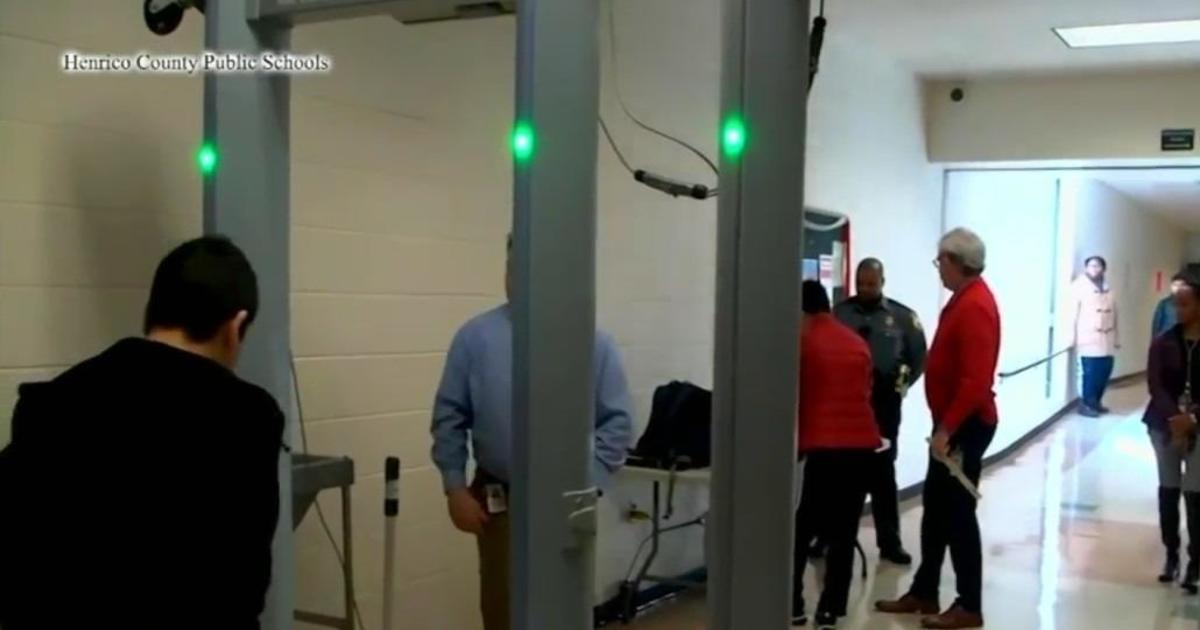Broward Sheriff's Office Active Shooter Training Exercises Focus On "Stopping The Killing, Stopping The Dying"
FORT LAUDERDALE (CBSMiami) – The scenarios could very well have been real — a trio of suspects opening fire on a crowded outdoor mall and a pair of suspects attacking people and holding them hostage inside a building.
Fortunately, the scenarios were not real and were part of comprehensive active shooter training exercises for dozens of Broward Sheriff's deputies, fire rescue personnel and other employees.
The separate scenarios unfolded in two locations Tuesday. The hostage situation exercise took place at BSO's old Stockade facility and it focused on the ability of deputies and fire rescue personnel to work together to stop a killer and stop the dying.
"We're against the clock. The moment we arrive on scene we're minutes behind in terms of saving lives, treating victims," said Sheriff Gregory Tony, who worked for months to implement the highly sought after training from organizations backed by the FBI, Homeland Security and FEMA.
CBS4 News cameras were not allowed to record the portion inside the building but we were allowed to watch it and take photos.
The contrived scenario started as an active killer situation and quickly became a hostage situation with wounded victims crying for help.
"I'm gonna kill him," a trainer playing a killer yelled, as a "victim" lay wounded outside the entrance to the room in the building.
"No one else needs to get hurt," a BSO deputy responded. "What's your name?"
That response earned a kudos from a trainer overseeing the exercise, reminding the deputies that "as long as he's talking, he's not killing."
The scenario was designed to bog down, forcing deputies and fire rescue personnel to work together on ways stop the threat and get critical life-saving treatment to the injured.
Part of the problem in mass shootings and other incidents is that medical personnel must wait to get to victims until a scene is secure and safe for them to enter.
"Our deputies are now supplied with bleeding control kits on their persons so the transition in training is if we stop the killing, start the treatment, put a tourniquet on, do wound packing, things of that nature.," Tony explained.
This exercise was run by ALERRT, the Advanced Law Enforcement Rapid Response Training Center at Texas State University. According to ALERRT's website, in 2013 the program was named the National Standard in Active Shooter Response Training by the FBI.
"Our goal is to get everybody on the same page," said ALERRT Adjunct Professor Eddie Molina, a San Antonio Police Department Detective. "We want to knock down the walls on the rivalry between police and fire to get everybody training together."
The other active shooter training session on Tuesday unfolded partly on what looked like video game screens, with steering wheels, which allowed deputies to simulate driving to necessary locations during the crisis. The phony scenario was that three suspects attacked an open air mall and more than a dozen people and officers were shot. Deputies, 911 dispatchers, paramedics and public information officers who deal with the media played roles and the goal was to simulate a mass shooting and try to get multiple layers of personnel to communicate more effectively and make effective real-time decisions.
"They're being measured on how fast they're able to extract victims, treat them, how accurate they were on engaging the suspect," Tony said. "Did they hit them? Did they miss a shot? Did they injure a victim?"
Bill Godfrey is a lead instructor with the Texas A&M Engineering Extension Service, which ran the scenario.
"It's the repetition and the ability to practice, make some mistakes, do a little bit different scenario with different problems and learn," he said, adding that they wanted to focus on questions like, "How do we work better with each other? How do we communicate more clearly? And how do we make decisions faster?"
The goal is always to stop the threat while also aiding those in urgent need of care.
"It's not just about the getting the bad guy," Godfrey said. "It's about that clock. Because someone who's been injured and is bleeding to death has a limited time and we've gotta get to them."
This portion of the training was funded through the Department of Homeland Security and usually has a waiting list of 10 years. Tony said after he took over as Sheriff he spent time Washington meeting with high ranking officials with Homeland Security, the FBI and FEMA to try and get this training in Broward.
"It was clear that we weren't capitalizing on working with our federal partners," Tony said.
BSO plans to take the lessons learned in these training sessions — one will last all week and the other until Wednesday — and integrate them into the agency's training policies. BSO's trainers will also begin teaching some of the techniques and lessons to their divisions and potentially to other agencies in Broward as well.
Ultimately, Tony wants to make this type of training an annual event for all of BSO's deputies, approximately 2,500 sworn officers, at the new $30 million regional training center BSO is expected to break ground on later this year. Tony said the agency is trying to increase training and recover from its response to the Parkland shooting in 2018 while also being prepared for a mass shooting like the ones that occurred over the weekend.
"It's clear that we came up short in many different roles so by introducing this training and other trainings we've done over the past few months, it's building back up the morale and confidence in the agency," Tony said. "We look at what just happened two days ago (and) this is why we can't be complacent and wait for bad things to happen. We have to get ahead of it."




